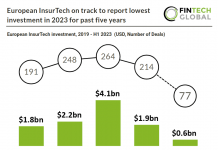The KYC and refresh process in financial services can often be heavily burdensome, complex and costly for companies, with processes still lacking up-to-date technologies.
In a recent post by Quantexa, the company highlighted how despite years of investment in tech upgrades and digitisation, many legacy banks and other financial institutions still struggle to provide a seamless digital onboarding experience for their prospective customers as well as current customers, who may be contacted repeatedly for updated information.
According to the firm, corporate clients report that the average onboarding process requires eight separate contacts with each of their financial services providers, and that the customer refresh process takes an average of 20 days to complete. Many corporations are multi-banked, which means such a process is often repeated multiple times.
KYC still remains the bedrock of effective financial crime compliance, and such onboarding and refresh process, Quantexa highlights, are immensely important to support, amongst other things, robust AML capabilities.
How can banks and financial institutions make better use of the data and information they already have access to? First of all, Quantexa suggests building a connected view of a customer before they’re a customer.
The company said, “When onboarding a new customer, the typical approach is to start from scratch and assume that nothing is known about the customer in question – but that’s rarely the case. For large legacy financial institutions, there is a high likelihood that your firm has seen or interacted with that new customer previously.”
Quantexa suggests that companies should consider that the new customer may hold a different product with you in a different line of business/geography. In addition, the customer may have been the counterparty to a transaction with one or many of your existing customer, may have family or associates who are already customers or may be a director/controller of a firm that you already have as a customer
Quantexa continued, “These connections are powerful – in terms of improving onboarding efficiency if information can be gathered internally rather than via the customer, but also in terms of making an informed risk assessment. It is usually difficult for large financial institutions to draw these connections because they lack the entity resolution capability to build a true single customer or prospect view.
“The result is poor customer experience, a lengthy analysis process, and an impression that the financial institution does not truly know or appreciate the existing relationship they may have with a customer.”
Banks and FIs should also use high-quality third-party data – with accuracy – claims Quantexa. With the amount of high-quality third-party data available continuing to increase year-on-year, and new providers entering the space with additional useful data being captured, gathered and curated, particularly on legal entities.
Quantexa remarked, “ Most financial institutions are now looking at strategic ways of leveraging this third-party data to increase the efficiency of their customer onboarding or KYC refresh processes, as well as identify change events and their potential risk implication as and when they happen.”
The challenge, the firm stresses, is data overload, “Simply subscribing to a third-party data set and allowing your KYC analysts loose within that data to fill in customer profiles and identify risk will not improve the efficiency of your KYC process.”
When using a range of data sources, consolidating the relevant information and building ownership and control views can become increasing cumbersome. Quantexa states this may lead to poor quality KYC profiles, mismatching information with internal databases and bad customer outcomes.
The way to help solve this, Quantexa believes, is through entity resolution technologies. By automatically connecting the third-party data with a financial institution’s internal view of a customer, enriching the profile with new or more up-to-date information, and therefore finding the correct data in a structured way.
Quantexa outlined the third and final way to make use of their data and information is to use context to identify risk, before it becomes a reality.
The firm said, “Financial institutions rely on a layered approach to detect risk at onboarding and refresh – for example, the use of a customer risk assessment taking into account jurisdictional risk, product risk and structural risk is layered with screening for sanctions risk and Politically Exposed Persons (PEPs), which in turn is layered with an enhanced due diligence approach for high-risk customers.”
Customer context is another key layer on top of these existing controls. Quantexa highlighted that an analysis of the recent laundromat cases emphasise how important a customer’s ownership and control structure is to understanding the underlying risk of that entity being used for money laundering – and how simple contextual factors could have uncovered serious risk indicators.
Find the full post here.
A recent study by Quantexa has found that up to 61% of those in financial services use or plan to use AI.
Copyright © 2022 FinTech Global











